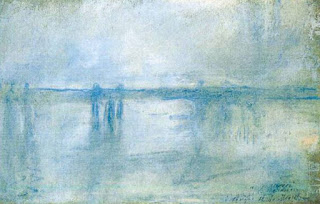Wednesday, June 19, 2013 -  ARCA 2013,Noah Charney
ARCA 2013,Noah Charney
 No comments
No comments
 ARCA 2013,Noah Charney
ARCA 2013,Noah Charney
 No comments
No comments
Report from Amelia: ARCA Intern Yasmin Hamed
 |
| Spoleto |
After a week of getting to grips with classes and living like Amerini, students in ARCA's Postgraduate Program in Art Crime and Cultural Heritage Protection hit the ground running this week both in and out of the classroom. Monday’s cold weather was met with a warm welcome from Dr. Noah Charney, founder of ARCA, in ‘Art Crime and its History’.
Following an introduction to art history, we were instructed on how to read the symbols of art and question everything concerning the provenance of an artwork. Day Two of our introduction to the history of art crime was aptly titled ‘Art forgery: The World Wants to be Deceived’. Pouring over centuries of case studies related to all that is fake and forged in the art world, we were introduced to some of the most infamous names in the history of art forgery; John Myatt and John Drewe; Han Van Meegeren; and Shaun Greenhaulgh. In keeping with the theme of connoisseurship deeply explored in the past two weeks, we examined fakes within the world of wine.
On Wednesday, Dr. Charney asked the student body to reverse its role and contemplate our own art forgery. After going around the room it was clear to see that not only did our class dive at the chance to plan their own art crime, but for some more than others a career as a master thief may work as a possible Plan B! On a more serious note, this discussion revealed the alarming ease of forging and smuggling art and antiquities. Carrying on from last week, the astounding interconnectivity of each and everyone’s own expertise definitely shone a light on the multifaceted nature of the world of art crime. For example, Mark Collins, a current investigator with the Ontario police, was well equipped to create a suspect profile of criminals in the art world.
After a long day of planning illegal activities, the class descended on the local oil mill for an extremely tasty evening. Along with Monica Di Stefano, the class was introduced to the family of Francesco Suatoni, our local amerino oil producer. Having learned all about the history and production process of olive oil and getting a first-hand view of the presses themselves, the class was treated to a tasting of the local Umbrian olives.
The week progressed with a broadening of our definitions of art crime. Examining the theft of books and literature, bibliographer Anna Knutson was once again able to offer her insights to the class on this niche area of criminal activity.
The end of class Thursday held an exam on all aspects of the history of art crime, famous case studies and definition, after which a much needed celebration was in order! The class ascended the hills of Amelia to the apartment of this year’s writer-in-residence Susan Douglas, a lecturer and writer based in Toronto. Some good wine, great food and even better discussions were had, no doubt leaving a few of us more tired than usual for our last day of Dr. Charney’s lectures. Our final afternoon with ARCA’s founder saw us segue from the world of art crime to obtaining some insider knowledge on the world of publishing. Unsurprisingly, a large number of students seemed intent on publishing in some area whether it be through fiction, academic books or journal articles, all of which were covered in detail with numerous insider tips during Dr. Charney’s session.
On Friday night we said an official goodbye to Cristina Tardaguila, a student visiting the programme for just one week. Tardaguila who currently works as a journalist in Brazil, was a welcome addition throughout the week with many insights into the interaction of the media and art crime, most notably with regard to the severity of antiquities smuggling in South America.
The second ARCA weekend trip of the summer beyond the walls of Amelia led us to Assisi and Spoleto, two similar hilltop Umbrian cities with what can only be described as having spectacular panoramic views. Led by our guides Pierluca Neri and Alessandro Manciucca, both Umbrian natives with a true love of the region, we first explored the Church of St. Francis of Assisi among others whilst including a short wander around the cobbled streets of the town’s many craft shops. Spoleto, although similar, had its own unique sights including a trip to an astounding 13th century aqueduct pouring over the valleys surrounding the town.
Here's a link to other posts by the ARCA Interns: orientation and the first week of classes with Dr. Tom Flynn. You may find out more about ARCA's education program here on the website.










